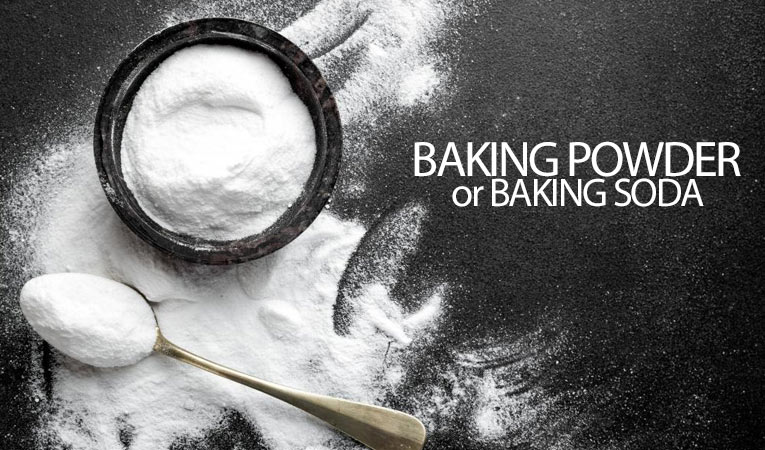What is Baking Powder & Baking Soda?
22-09-2019 | Author : Inchara Govind

Back when I started baking, there were no big stores to get baking supplies in Bangalore. I used to buy my baking powder at the local provision store. But when I asked about baking soda, the only response I would get was that they had cooking soda and cleaning soda; none of them were specified in the recipe that I had been following.
I had plenty of questions in my mind, like should I use baking powder instead? Should I omit it altogether? Should I use cooking soda? What is cleaning soda? Let move on and try to answer these questions along with understanding the difference between bakin soda and powder.
What is baking soda?
It is a chemical called sodium bicarbonate. For the science geeks out there, it is a base used as a chemical leavening agent. A thumb rule in chemical reactions is that when an acid reacts with a base, it releases water and carbon dioxide. When baking soda (a base), reacts with an acid (like yogurt, lemon juice, buttermilk, vinegar, cocoa powder), it releases carbon dioxide which leavens the batter/dough.
Another way that baking soda can be used as a raising agent is through heat, due to thermal decomposition, provided it is not already neutralized by an acid. However, only half the carbon dioxide will be released this way. Another factor to keep in mind is that when baking soda is used this way, it decomposes to form sodium carbonate which is strongly alkaline and gives the end product a soapy, metallic aftertaste, which is why recipes with excess baking soda have this aftertaste.
What is baking powder?
Baking powder is a combination of around 30% baking soda, a weak acidic ingredient like calcium acid phosphate, sodium aluminum phosphate or potassium bitartrate (cream of tartar) and a buffering material to prevent the acid-base reaction to take place too early. The reaction is activated with the addition of water (wet ingredients).
As discussed above, baking powder is also a leavening agent and is based on the same principle of acid-base reactions, which release water and carbon dioxide.
When the baking powder contains fast acting acids, the reaction takes place as soon as wet ingredients are added, at room temperature. When it contains slow acting acids, the reaction takes place with the presence of heat. If the baking powder has only either a slow acting or a fast acting acid, it is called “single acting” baking powder. If the baking powder has both, it is called “double acting” baking powder. Most baking powders available nowadays are double acting. This means, there will be one reaction when the wet ingredients are added, and another when heat is introduced.
When is baking powder used?
Baking powder is used when the recipe doesn’t have any additional acidic ingredients. Hence, to answer my very first question, no, baking powder and baking soda are not interchangeable.
Why do some recipes contain both baking powder and baking soda?
When a recipe doesn’t have enough acidic ingredients in order to neutralize the amount of baking soda required to leaven the product, the additional leavening is provided by the baking powder. This is done in order to avoid the metallic aftertaste.
Should I omit it altogether?
I trust that you will be able to answer this question now..
Should I use cooking soda?
Check with the store guy if it is chemically the same composition.
What is cleaning soda?
This is the sodium carbonate we discussed earlier. This is not to be used while baking.
Hope this answers questions that arise regarding baking powder and baking soda. Don’t forget, baking is an art but it also involves a lot of chemistry!





